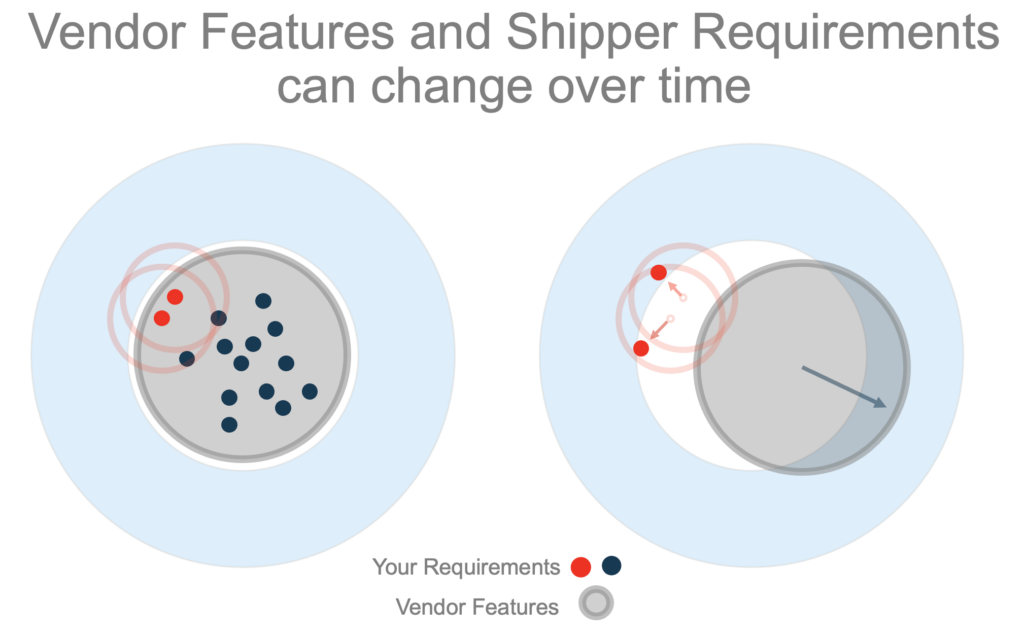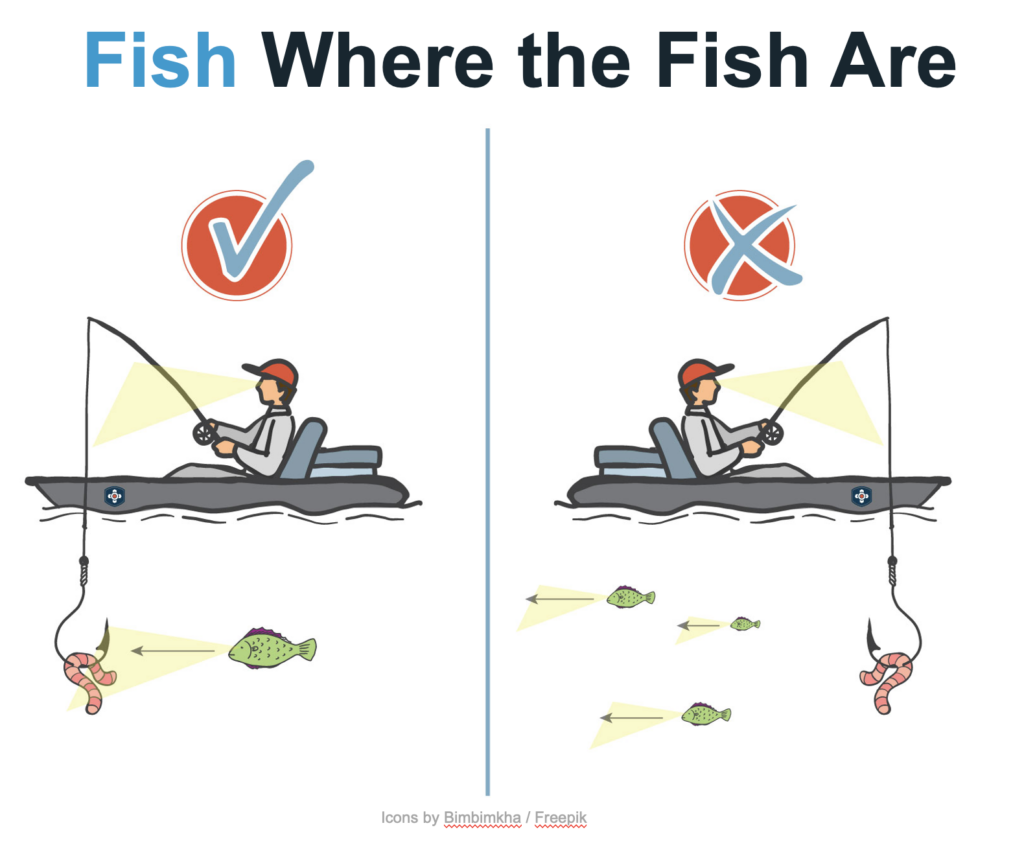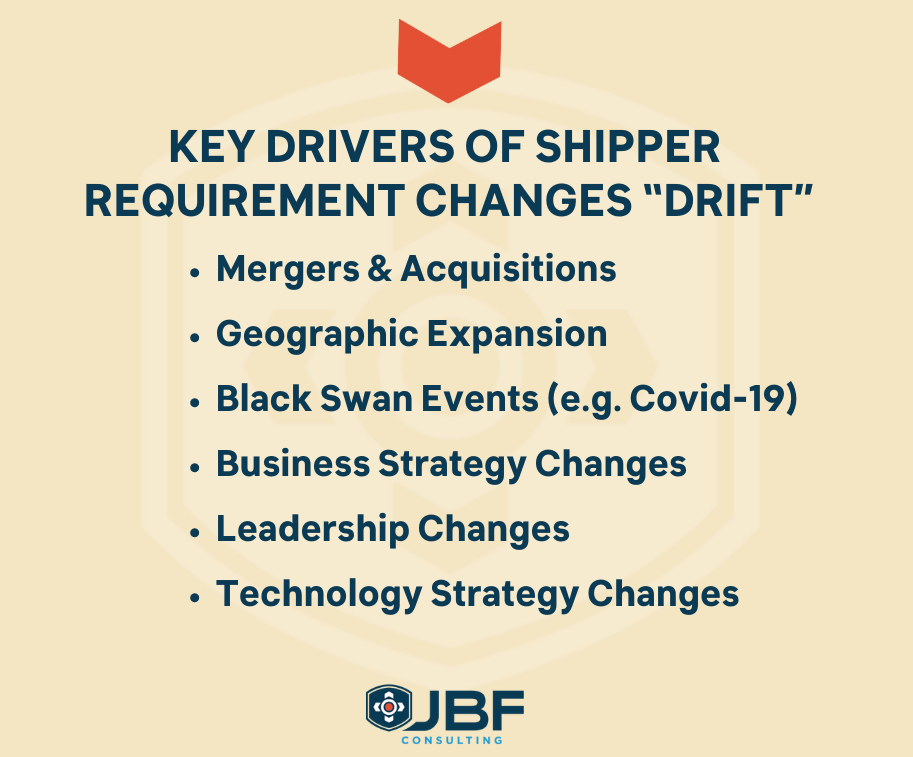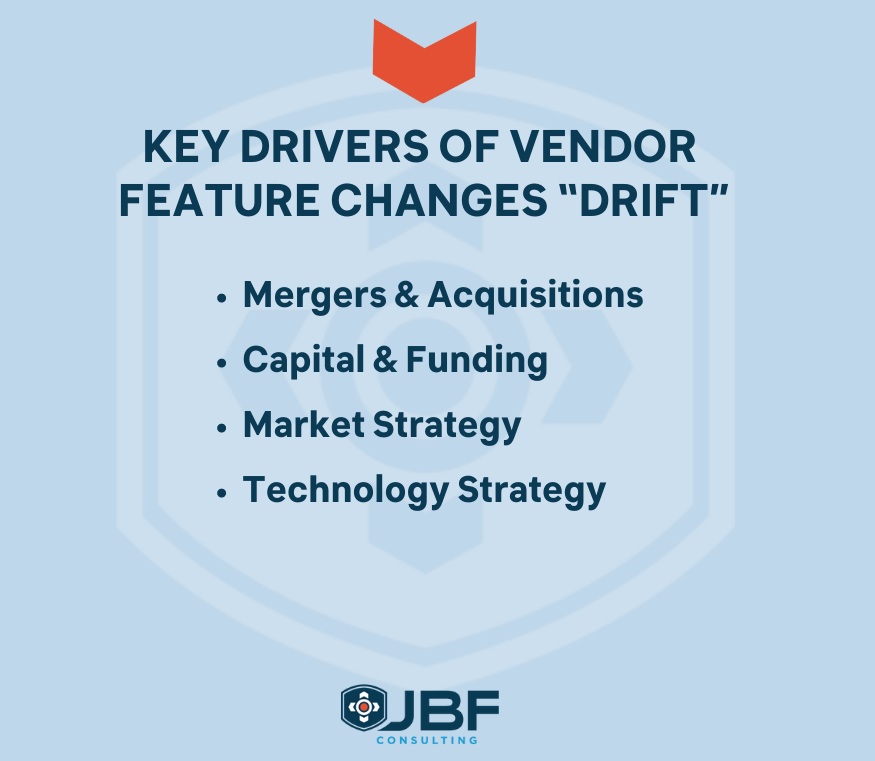In a previous article titled When Transportation Requirements Are Like Aliens, we outlined the reasons why the functional requirement is the key building block of any successful TMS selection or implementation.
The key theme from the original piece was this: In order to select the correct Logistics Technology for your business, you must have a well-defined set of requirements that overlaps with the corresponding feature set of the Logistics Technology provider.
Requirements are essentially ‘problems to solve for’ and the matching features from the vendor are ‘solutions to problems’ you might also have.

"Requirements are essentially ‘problems to solve for’ and the matching features from the vendor are ‘solutions to problems’ you might also have."
However – like fishing – both requirements (the hook) and vendor features (the fish) change over time (tides, current, etc.). Because of this reality we call “drift”, it is critical for shippers to establish a mastery of their current and future requirements, while at the same time understanding the strategic direction of the software vendor.
It’s difficult for a consulting firm to tell a client “You are a shipper that selected a routing system designed for a trucking company.”
While the features might be a fit for your requirements today – there is a high probability that over time your vision will deviate from that of the vendor’s.
Key drivers of shipper requirement
- Mergers & Acquisitions
- Geographic Expansion
- Black Swan Events (e.g. Covid-19)
- Business Strategy Changes
- Leadership Changes
- Technology Strategy Changes
Software vendors, and their product’s features, are also not static. They too have strategies, shifting priorities, limited R&D funds, and many clients to serve.
Recently introduced feature sets are introduced to the market and are gradually refined and enhanced based on these drivers.
Today, many vendors still operate using N-tier, client-server style architectures. Vendors that shift to multi-tenant cloud or a micro-services architecture are essentially re-writing code that has a probability of functioning differently than it did with the prior architecture.
Key drivers of vendor features
- Mergers & Acquisitions
- Capital & Funding
- Market Strategy
- Technology Strategy
The New Reality for Shippers
Truly – the only constant is change. Unfortunately, the current reality is the pace of change has many shippers ‘on their heels.’ VUCA (Volatility, Uncertainty, Complexity, Ambiguity) is arguably the new reality for shippers for the foreseeable future.
So, what can the shipper do if they are in the market for a new TMS, or if they suspect they have outgrown their current system?
- Master your requirements. Document them, prioritize them, delegate ownership to someone that continuously tracks, monitors, and analyzes requirements. This is often a ‘Super User’ or a ‘Product Manager’ type role within the business. Note – this should NOT be an IT function. These are functional, business requirements – and they are yours.
- Revisit your requirements. When corporate strategies and policies (e.g. customer service policies, procurement strategies, etc.) change, revisit your requirements to determine impact. If the delta is significant, open a dialogue with the software vendor or your trusted consulting partner for their perspective. In my personal experience, it’s usually possible to design solutions to problems using the tools you already have.
- Know your software vendor’s architecture. If they are operating on old technology, there is a high probability (and high risk) that R&D funds will be directed towards an updated architecture (multi-tenant cloud, micro-services, etc.). Feature enhancement or new features will be put on the back-burner while the money is funneled towards rearchitecting the product. This creates the ‘feature deviation’ that triggers many shippers to look for alternatives.
- As much as possible, know your software vendor’s financial position. If they are public, ensure someone is reading the quarterly reports. If they are private, understand if they are VC-backed or ‘bootstrapped’ to better gauge the risk of acquisition, dissolution, or even a lack of profits for funding R&D for new features you need. Consult your trusted advisor consulting firms for insights as well.
- Explore ‘incremental’ vendor solutions that can close key gaps and integrate with your existing platform. In our experience working with complex shippers, most are abandoning the ‘monolithic’ single vendor approach and moving towards ‘ecosystems’ of best-in-breed functionality.
"Truly – the only constant is change. Unfortunately, the current reality is the pace of change has many shippers ‘on their heels."

Closing Thoughts
Obviously, your goal is to ensure your priority requirements and strategic direction as a shipper are closely aligned to the current and future capabilities and features of the software vendor.
If not recognized, “drift” can either pull your business further away from your current vendor (not ideal), or if you’re drifting in the same direction (synergistic) – could be a great spot to fish on!
ADDITIONAL RESOURCES
Subscribe to the The Digital Logistician
Sign up for our Monthly Email Bulletin
Follow the JBF Company Page on LinkedIn
Download our White Papers & Ebooks
About the Author
Brad Forester, CEO of JBF, is a highly recognized senior supply chain leader with over 23 years managing, designing, and implementing freight transport technology, Brad has a unique mix of carrier, shipper, software, and consulting experiences that benefit clients. With functional expertise in Global TMS Programs, Change Management, Organizational Design, and Systems Integration, he has been leveraging these skills to benefit clients since he founded JBF in 2003. Brad has a BA in logistics management from Michigan State University.
About JBF Consulting
Since 2003, we’ve been helping shippers of all sizes and across many industries select, implement and squeeze as much value as possible out of their logistics systems. We speak your language — not consultant-speak – and we get to know you. Our leadership team has over 100 years of logistics and TMS implementation experience. Because we operate in a niche — we’re not all things to all people — our team members have a very specialized skill set: logistics operations experience + transportation technology + communication and problem-solving skills + a bunch of other cool stuff.



